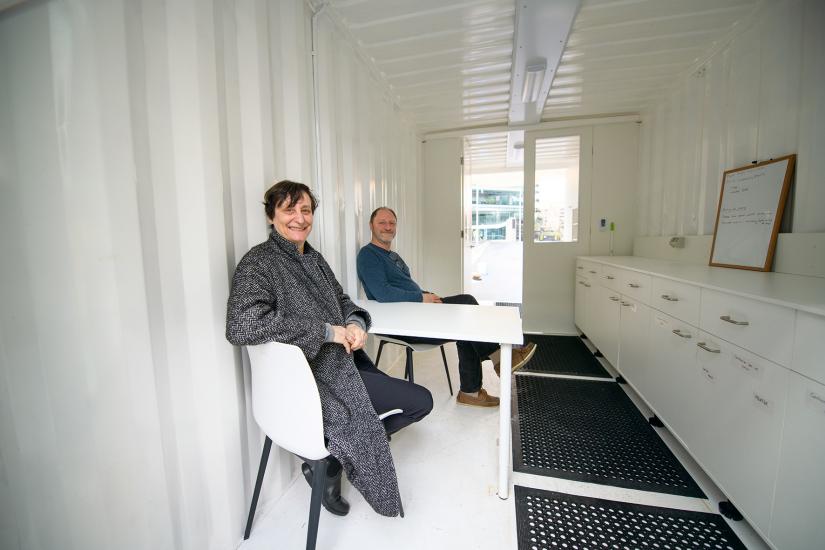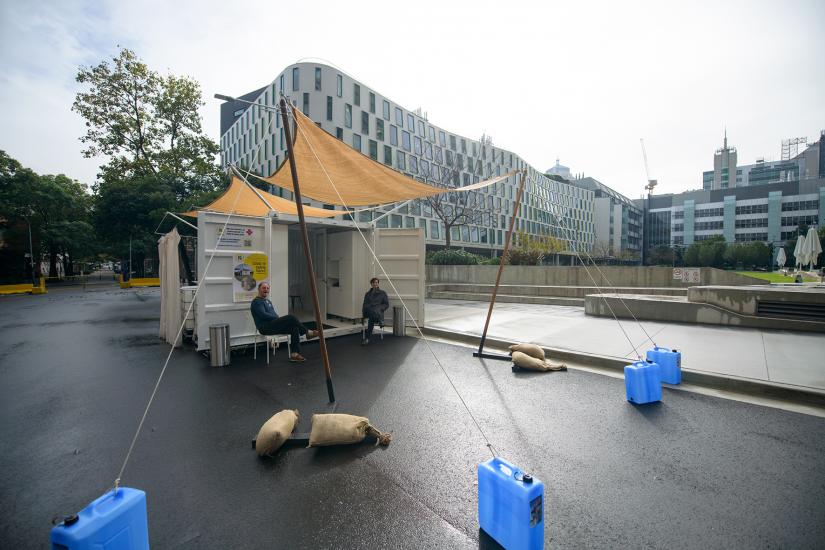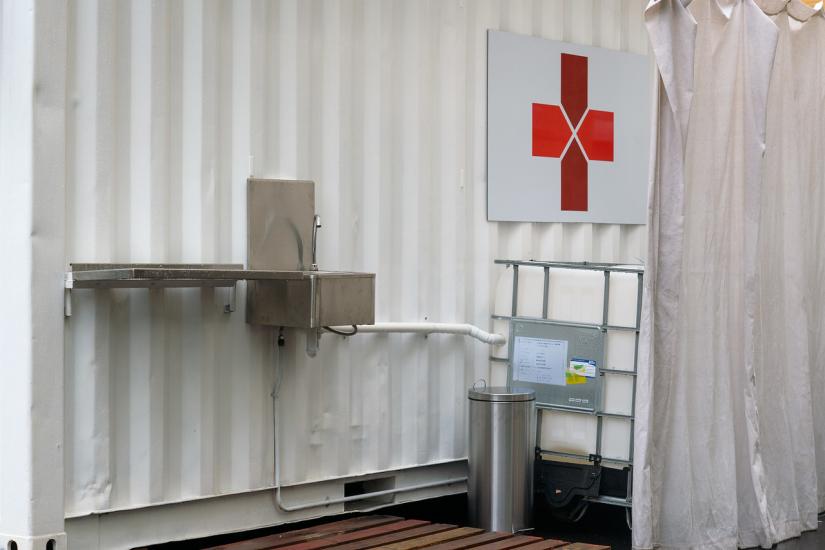
UTS Professor Deborah Ascher Barnstone and architect Professor Robert Barnstone have designed Australia’s first purpose-built mobile covid-19 testing centre. Photo: David Lawrey
This year, as it became clear COVID-19 was not only going to change our present but also our future, UTS academics collectively chose to meet the moment through innovation.
Deborah Ascher Barnstone is one Faculty of Design, Architecture and Building researcher who has rapidly identified ways to apply her expertise to this crisis. Professor Barnstone is both an international architectural historian and a practicing architect.
Her practice, Ascher Barnstone Design, is collaborating with the charitable foundation P&G Initiatives to design and build structures that can be quickly erected to serve as clinics or COVID-19 testing centres.
The fully functioning prototype, designed by architect and UTS Professor Deborah Ascher Barnstone with architect Professor Robert Barnstone, has been built by a coalition of not-for-profits and refugee workers, led by P&G Initiatives.
In the first trial of the collection station, the facility has been operating as a testing centre in Sydney in partnership with Douglass Hanly Moir Pathology for the past two weeks.

The collection station is built from a converted 20ft shipping container for rapid assembly and ease of transportation. Photo: David Lawrey
Designed to be built within days and shipped to anywhere it's needed, the team behind the collection station have designed a superior facility that can replace existing gazebos to provide frontline workers with warmth, shelter, running water and other sanitation facilities – all for no greater cost.
The collection centre is designed to be safe, cheap, fast and mobile, while also providing sufficient space and clearance for health-workers and the public to practice social distancing.
It is hoped that the collection station may be a viable resource for developing countries that are suffering growing Covid-19 outbreaks, where poverty and close living quarters are impacting communities ability to limit the spread of infection.
“Fortunately in Australia we’ve managed to flatten the curve, however the pandemic is just getting started in developing countries, which are likely to be some of the hardest hit by this disease, said UTS Professor Deborah Ascher Barnstone.
These structures provide much-improved facilities that are affordable, permanent and portable – they can be moved and deployed swiftly, as needed.”
“It’s vitally important we protect healthcare workers too, by making sure they can wash their hands, stay safe and stay warm over winter – or cool and sheltered over summer.”

The station includes an climate controlled office space and lab bench, a deck area with equipment and nurses station, and a screened PPE changing area with medical waste facilities. Photo: David Lawrey
While the mobile facility has been designed to address the urgent need for Covid-19 testing facilities, the units have also been created with adaptability in mind, and have the potential to be converted for other medical uses, such as mobile dialysis or immunisation clinics that could be easily transported to service regional and remote communities.
The testing centre visited UTS in June to enable the design team to consult with experts from the Health and Science faculties, who will inspect the facility and provide valuable feedback and recommendations that can be incorporated into future designs.
The project to build Australia’s first purpose-built collection centre has been coordinated by P&G Initiatives, a social enterprise employing some of the most marginalised Australians, with assistance from Team Rubicon Australia, who have provided practical and administrative support to the pathology staff.

